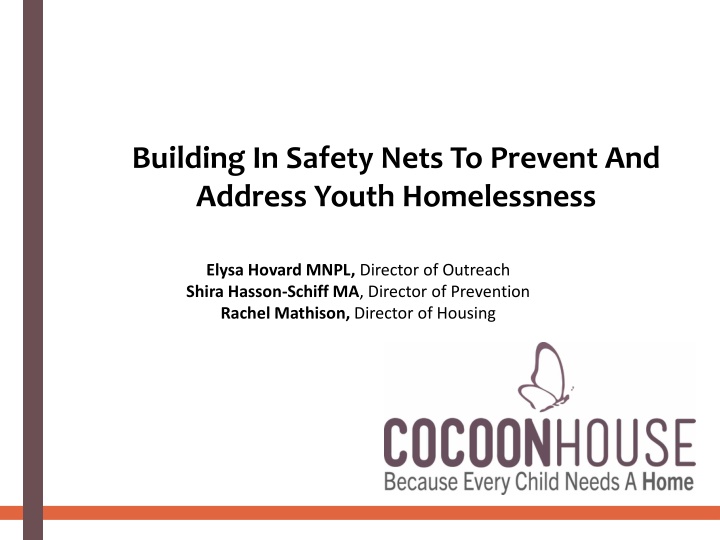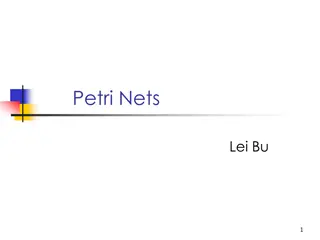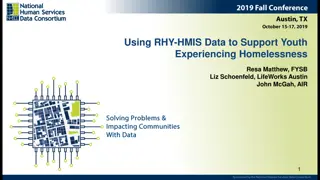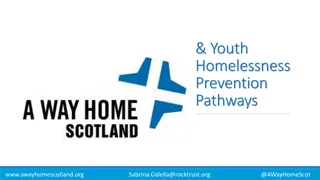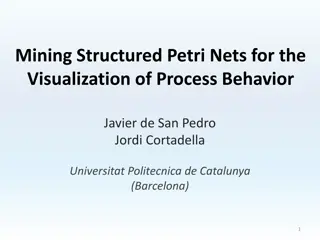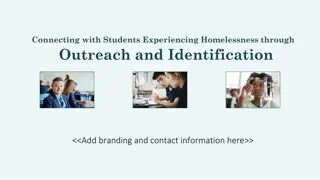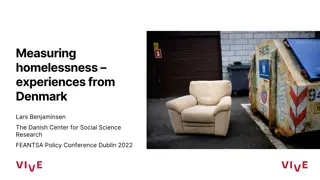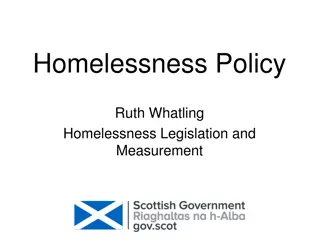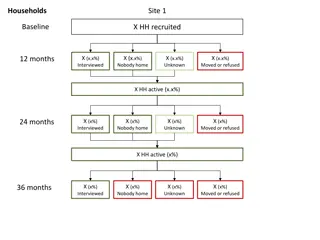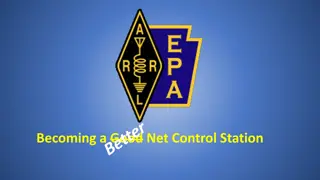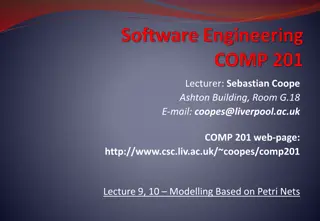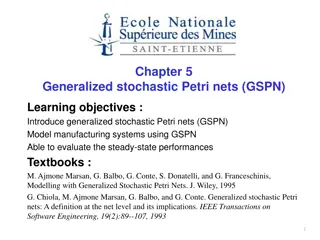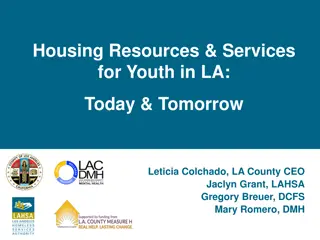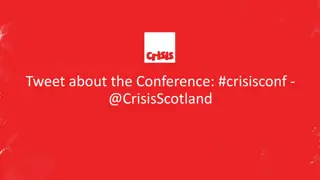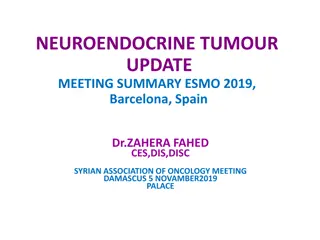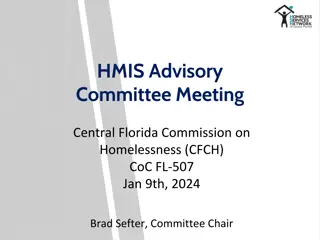Building Safety Nets for Youth Homelessness
Addressing youth homelessness through safety nets and barriers, recognizing disproportionality in systems and providing a continuum of services to prevent and support youth in need.
Download Presentation

Please find below an Image/Link to download the presentation.
The content on the website is provided AS IS for your information and personal use only. It may not be sold, licensed, or shared on other websites without obtaining consent from the author.If you encounter any issues during the download, it is possible that the publisher has removed the file from their server.
You are allowed to download the files provided on this website for personal or commercial use, subject to the condition that they are used lawfully. All files are the property of their respective owners.
The content on the website is provided AS IS for your information and personal use only. It may not be sold, licensed, or shared on other websites without obtaining consent from the author.
E N D
Presentation Transcript
Building In Safety Nets To Prevent And Address Youth Homelessness Elysa Hovard MNPL, Director of Outreach Shira Hasson-SchiffMA, Director of Prevention Rachel Mathison, Director of Housing
Community Agreement We are excited to share with you and hear your experiences We want this to be a safe space for all to participate! There are no wrong or right responses to anything in this room. If you have question or need clarification, please ask! Please be mindful of confidentiality and use false names if necessary.
Cocoon House Introduction Continuum of Services Prevention , Aftercare and Family Reunification Youth 11-20 and their parents On-the-street Outreach to Youth 12-24 Emergency Shelters Youth 12-17 Drop-in / Day Center and Case Management Youth 12-24 Transitional Housing And Maternity Home Youth 12-17
Safety Nets and Barriers What Safety Nets do many youth who are housed have access to? What Barriers do many youth who are homeless face?
Disproportionality in Systems Students who experience homelessness in Washington State 1 in 13 African American 1 in 13 American Indian/Alaska Native 1 in 25 Hispanic/Latino 1 in 43 White *students identified k-12 schools. 2014-15 homeless student data report from Schoolhouse Washington Youth of color are over represented in the foster care systems Potential explanations: Disproportionate and disparate needs of children and families of color, particularly due to higher rates of poverty Racial bias and discrimination exhibited by individuals (e.g., caseworkers, mandated and other reporters) *Information gathered from: Child Welfare Information Gateway* This publication is available online at https://www.childwelfare.gov/pubs/issue-briefs/racial-disproportionality/.
Cocoon House Continuum Entry Point Independent living skills Long term Housing Prevention Community Transitions Entry Point Family Reunification Short term housing Permanent Housing Counseling/ Advocacy Drop In-Center Outreach Aftercare Case Management Emergent needs Outreach
Outreach Programs Coordinated Entry Safe Place 24/7 crisis response Youth Rapid Rehousing Pre- case management Mobile Case Management Street Outreach Youth 12-24 U-Turn Education Music Program Low Barrier & Drop In Center Employment
Youth Accessing Services Mandated requirements for various systems. Needs to be in compliance Youth ends up repeating the cycle or getting into further trouble. Youth is in Trouble Youth goes back to old habits. Youth closes up and stops asking for help. For Example: Treatment Housing Mental Health The Youth Call Youth Gives Up services providers Youth gets frustrated Youth can become discouraged Youth can become angry.
Barriers to Services Barriers Language Lack of Understanding Paperwork Unclear expectation Age Solutions Code switching Hand over the power and help the youth take the driver s seat in case management. Identifying barriers and helping youth navigate those barriers. Know your client and be present in conversations - Clear expectations. Set the bar high!
Build key community partnerships Youth is empowered Youth Becomes Compliant with system Service Provider refers youth Street Outreach Community Collaboration Model Youth Feels Supported Youth Engages in Services Advocate/Navigator case manages youth Youth Gains Trust in the System Youth is linked to services from community partners
Now What: Application Create key contacts within systems that youth need to access Limit use of phone numbers and resource lists Teaching youth to access services by working alongside them Don t lecture when youth are unprepared Find a strength Don t take a fix it approach Be authentic
Now What: Lessons Learned Blended roles for outreach programs to ensure sustainability Streamline outputs and outcomes to satisfy blended funding Make data apart of outreach culture Embed outreach workers in systems mobile offices DJJC Schools Community Centers Teach staff to navigate bureaucracy and professionally pushback on systems Evaluate internal processes and protocols to prevent internal barriers
Prevention Early Intervention Who Cocoon House Prevention Systems Target Parents of teens at risk of becoming homeless Parents of young people who have not yet experienced homelessness or who have entered an emergency shelter for the first time Recent Demographics Show 86% of parents have teens between 13-17 years old of the youth had previously runaway (most between age 12-16)
Prevention History In 1998 parents were calling Cocoon House for help with their teens From 1998-2000, research with SPU resulted in the following: Parents were concerned about their teen s: drug use, violence/criminal activity, running away, family conflict, promiscuity They expressed frustration and loss of hope, not knowing where to turn and demanding answers on how to handle the situation Parents reported major factors contributing to these issues included: Feeling they didn t have the necessary parenting skills Frustration with accessing services to help their teens Lack of services available to help their teen No services until the family was truly in crisis (teen runaway or kicked out) ORS worked with Cocoon House and Cocoon s Project SAFE was created
Cocoon House Project SAFE Cocoon House s Project SAFE: Prevention and Family Reunification Program Goals: 1) Prevent youth homelessness and 2) Promote healthier family functioning In 2006, TheNational Alliance to End Homelessness,named Cocoon House s Project SAFE a best practice, one of just a few programs in the country to focus on youth homelessness from a family systems perspective. (http://www.endhomelessness.org/library/entry/project-safe-everett-wa)
Prevention Program Components 90 minute phone consultation; 30 minute follow up Listen, validate, educate, reframe Listen, validate, revise action action implement next steps Weekly support groups Parent education classes and series 13 hour intensive parent-teen seminar Individualized Family Case Management to support reunification and aftercare Services available in English and Spanish
Cocoon House Project SAFE Program Cocoon House WayOUT Project SAFE 90 Minute Calls Family Case Management Drop-In Support Groups Parent Education Classes
Does it Work? 2008 Evaluation Outcomes Seattle Pacific University conducted a longitudinal study in 2008 and found: Of 850 parents 60% of these calls expressed the belief that their teen was going to runaway or get kicked out 85% of these calls felt increased levels of hope that the situation with their teen would get better 75% of these calls decreased their frustration about the situation with their teen 79% of these higher-risk cases, parents reported more confidence that their teen would not leave following the phone consultation Prior to accepting the placement, the shelter refers parents to Project SAFE phone consultation. In over 90% of these cases the teen had not showed up at the shelter!
Does it Work? 2014 Evaluation Outcomes Cardea conducted an evaluation in 2014 to determine the extent to which the program met outputs and short-term outcomes and found: Of 325 parents 52% felt increased hope that the situation with their teen would improve 81% decreased their frustration about the situation with their teen 90% of callers at the follow up phone call reported their teen was still living at home If youth had no history of living at home, they were 9 times more likely to be living at home at phone call B. If parents mostly adhered to the action plan, youth were 4.4 times more likely to be living at home at call B.
Lessons Learned From Prevention How should we as homeless youth service providers approach our work with youth and families differently? Shift our focus from youth services to youth and family services Implement a Family Systems approach (And understand the greater systems our youth and families are a part of) Be proactive whenever possible to better support youth and families in our field of work, rather than reactive focus on prevention rather than only intervention
Shelter and Housing Cocoon House Central: 8 beds of temporary housing (shelter) for 13-17 year olds Cocoon House East: 8 beds of temporary housing (shelter) for 12-17 year olds (including 2 HOPE beds for voluntary state dependent youth) Cocoon House North: 10 beds of transitional/long-term housing for 13-17 year old moms and their children (5 for moms, 5 for babies and children) Cocoon House Complex: 20 beds of transitional/long-term housing for 14-17 year olds (13 transitional beds and 7 RLSP beds for state dependent youth)
How do youth move through our Cocoon House system? Referrals Outreach Prevention Schools Juvenile Justice system Police Faith Communities Word of Mouth Outreach/Prevention Coordinated Entry Advocates Project SAFE
Connection to Community Schools Healthcare Mental Healthcare Chemical Dependency Support Probation Officer Family
Family Reunification Are parents/guardians a safe option? What supports need to be in place to go home? What safety planning is required? If family isn t an option, what happens?
Thank you! For more information about these programs: www.cocoonhouse.org Elysa Hovard at 425.259.5802 x 211 or elysa.hovard@cocoonhouse.org Shira Hasson-Schiff at 425.259.5802 x 208 or shira.hasson-schiff@cocoonhouse.org Rachel Mathison at 425.259.5802 x 109 or rachel.Mathison@cocoonhouse.org
